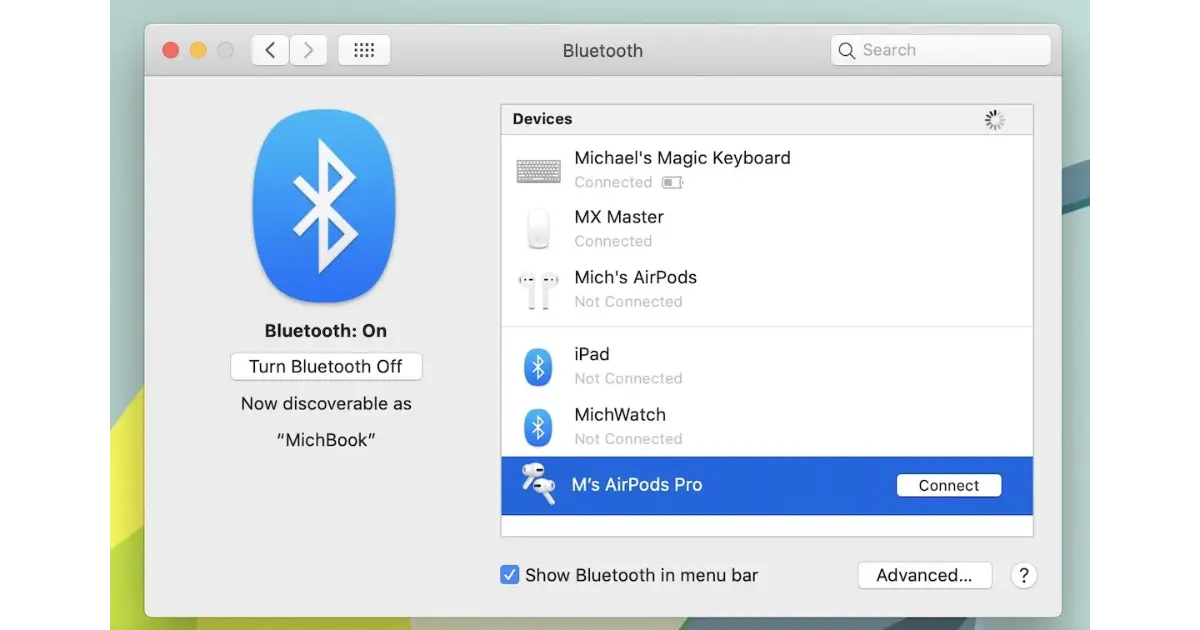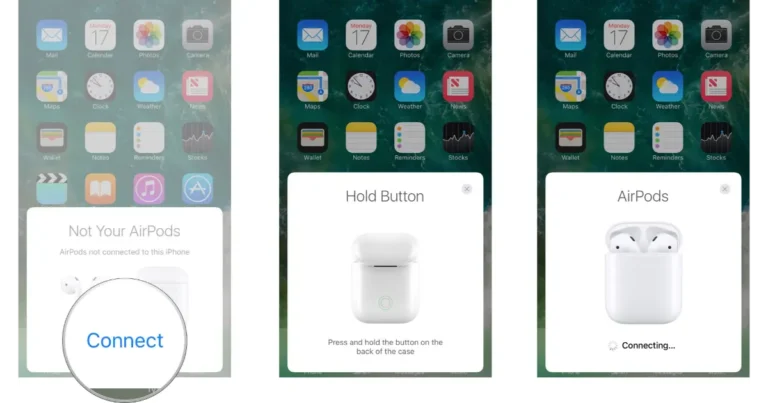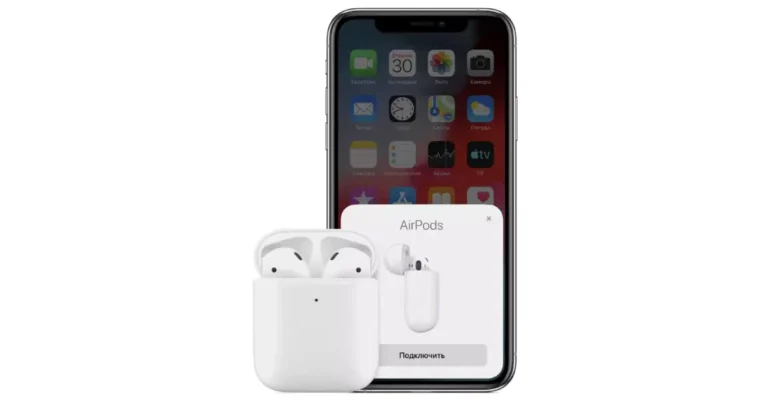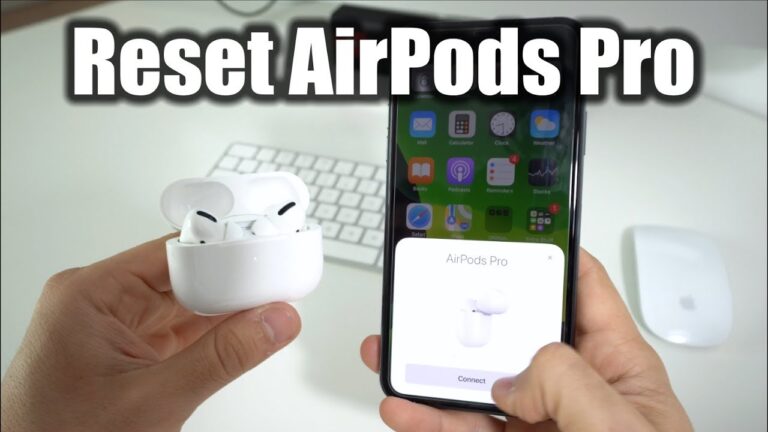How To Connect Airpods To Mac?
Here’s the easy way to connect your AirPods to a Mac, putting you in the driving seat to an immersive listening experience whether you’re jamming to your favorite music playlist, engaging in a virtual meeting, or listening to the most exciting podcasts.
With just a few simple steps, you’ll enjoy the sound wirelessly while keeping your hands free from the hassle of cords and carrying around the gadget.
This convenience is particularly beneficial for multitaskers or people working in dynamic environments. Making the connection between your AirPods and Mac is not just a feature but a gateway to a more flexible and enjoyable audio experience.
Let’s explore this process of pairing these devices in a few steps, transforming your auditory experience with the magic of Bluetooth technology.
Introduction: Elevate Your Mac Experience with AirPods
In today’s fast-paced digital life, the synergy between devices translates to work-related productivity and the personal enjoyment of multimedia content. The pairing of Apple’s AirPods has transformed the sound one experiences, from the crisp clarity of one’s favorite song to the delicate undertones of a beloved podcast.
When applied to a Mac, this experience advances to new heights, delivering users a seamless audio interface well integrated with work and leisure activities. In this blog post, we’ll guide you through connecting your AirPods with your Mac—a practical yet revolutionary action that opens the gate to a heaven of auditory delights.
Wireless headphones are not new, but AirPods have set a benchmark for convenience, quality, and innovation. Pairing your AirPods with your Mac could be the key to unlocking this premium audio experience.
Whether a professional seeking to optimize his workspace, a student looking to focus on his studies, or just someone eager to unwind with some tunes, this connection should enhance your auditory interaction with your Mac.
Understanding the Key to Seamless Audio Integration: AirPods and Mac Connectivity
Before we delve into the specifics of connecting your AirPods to your Mac, a core understanding of this connectivity and why it stands as a crucial pillar in user experience must first be defined.
This session will highlight both the technological and user-centric dimensions of AirPods and Mac integration, giving us an unequivocal reason for this synchronization to happen for convenience and enhancing effectiveness.
AirPods: A Technology Revolution in Wireless Audio

Apple AirPods are another innovation in wireless earbuds as they offer high-quality sound, smooth pairing with different devices, and user ease of use. As an aspect of AirPods’ design, its audio output is executed wirelessly through Bluetooth, eliminating cumbersome wires from interfering with the sound.
Besides catering to the audio output needs of its users, AirPods are also worth considering, given that they come equipped with features such as automatic device switching, spatial audio, and touch controls, and they are an integral part of Apple’s ecosystem.
The Mac: A Hub for Creativity and Productivity
The Mac sits in a league of its own for its excellent performance and sleek design, making it one of Apple’s most compelling and user-friendly personal computing offerings.
It serves as a powerhouse for creativity, productivity, and entertainment. When used with AirPods, the Mac, in combination, can turn into a mightier tool, providing users with a rich audio experience regardless of whether they are editing videos, participating in a video call, or simply indulging in music.
| Feature | Description |
| Performance | Robust performance is ideal for creative and productivity tasks. |
| Design | Sleek, minimalist design that is iconic and functional. |
| User Interface | Intuitive and user-friendly interface that enhances user experience. |
| Compatibility | High compatibility with a wide range of software and peripherals. |
| Security | Advanced security features to protect user data and privacy. |
| Ecosystem Integration | Seamless integration with other Apple devices and services. |
The Fundamental of Connection
Connecting AirPods to a Mac provides Bluetooth, enabling the Mac to convey audio output directly to AirPods instead of the traditional wired headphones or the Mac’s built-in speakers. This wire-free connectivity has many benefits:
- Mobility and Flexibility: They will be free to move around within the Bluetooth range without being tethered to the computer, which is ideal for multitasking.
- Enhanced Audio Experience: The AirPods are designed to deliver high-quality audio with features like noise cancellation (in AirPods Pro and AirPods Max) and spatial audio, improving the sound experience.
- Seamless Integration: Apple devices work seamlessly together, and pairing AirPods to a Mac is no different. Features like automatic switching and easy setup through iCloud accounts improve the user experience.
Once you understand this connection and its advantages, you can appreciate how AirPods and the Mac form one awesome combo that enhances digital interaction, productivity, and entertainment. This initial grounding will be a strong foundation for getting into the details of setting up this connection and why it matters.
AirPods to Mac: A Step-by-Step Guide
With a basic understanding of AirPods and the connectivity between AirPods and a Mac, let’s walk through the practical steps to get the synergy going and enjoy that audio experience seamlessly.
This section guides you through setting up the entire connection process, ensuring that you can quickly and effortlessly attach your AirPods to your Mac and, in the event of any of the common issues that may arise, troubleshoot it with ease.
First, prepare for the connection process; ensure that your AirPods are charged, your Mac is on the latest macOS, and you have an active iCloud account. These prerequisites will help in a successful setup.
Step 1: Enable Bluetooth on Your Mac
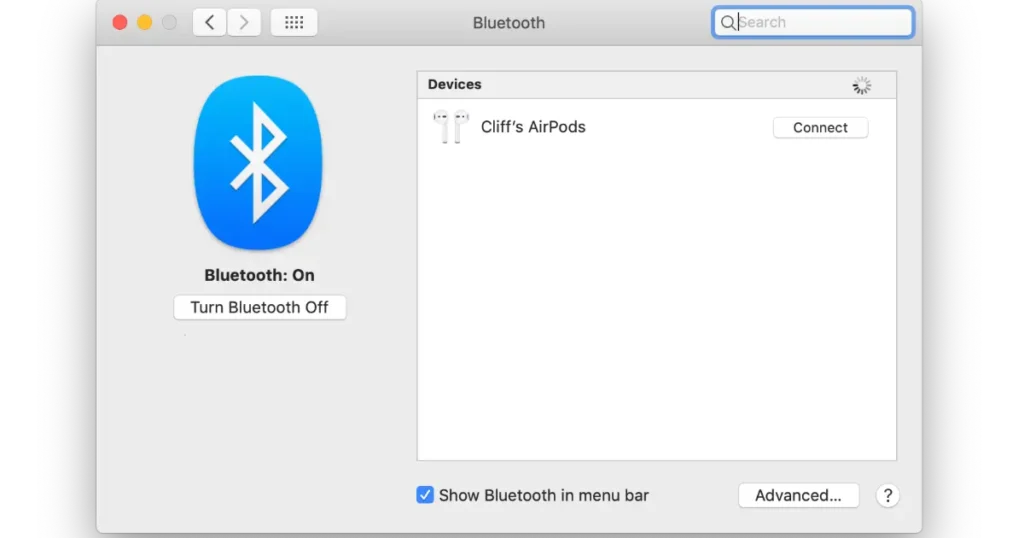
- Click the Apple menu on the top left of your screen and select “System Preferences.”
- Then, click on “Bluetooth.”
- Ensure that Bluetooth is turned on. If it is turned off, click “Turn Bluetooth On.”
Step 2: Put Your AirPods into Pairing Mode

- Put your AirPods in their case and close the lid.
- Press the setup button on the back of the case until the status light flashes white, indicating your AirPods are ready to connect.
Step 3: Pairing Your AirPods to Your Mac

- Your AirPods should now appear on the list of devices; turn your Mac on.
- Select the name of your AirPods from the list, then click “Connect.”
- When asked, choose “Enable” to ensure that the sound from your Mac will be fed to your AirPods.
Step 4: Verify That You Have Connected Your AirPods to Your Mac
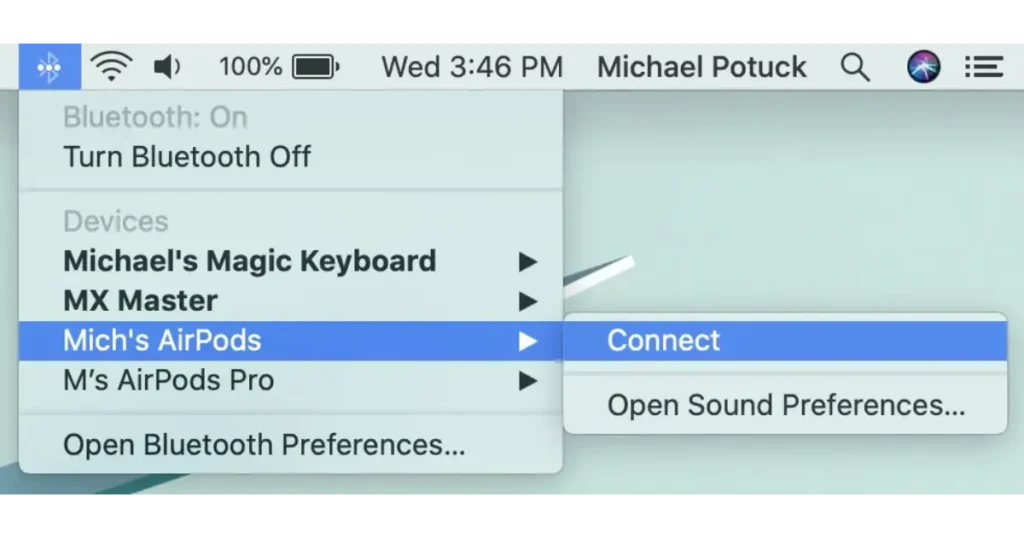
- Once connected, it should show “Connected” in the Bluetooth menu. The audio will now be redirected to your AirPods.
Troubleshooting Common Issues
- AirPods Not Showing Up in Bluetooth List: Assuming that the AirPods are sufficiently charged, within range, and put in pairing mode, reboot both the AirPods and the Mac in case necessary.
- Abrupt Disconnection: This may occur because of interference by other wireless devices you use. Place your Mac closer or eliminate possible sources of interference.
- Poor Sound Quality: Examine if your AirPods are relatively clean, as debris may affect sound quality. Also, check for no interference or impediment between your AirPods and Mac.
Maximizing Your Experience
After connecting, explore features such as “Automatic Switching” to get an integrated experience across your Apple devices. Customize the touch controls on the Mac’s Bluetooth settings to provide a more personalized and customized experience with the AirPods.
Key Takeaways
- Ease of Connection: With just a few steps, your AirPods can be wirelessly connected to your Mac, offering mobility and flexibility in your audio interactions.
- Enhanced Audio Experience: AirPods deliver superior sound quality, noise cancellation, and spatial audio features, making them an ideal companion for your Mac.
- Troubleshooting Tips: Common issues like connectivity problems or poor sound quality can often be resolved with simple fixes, such as ensuring your devices are charged, within range, and free from interference.
FAQs
Can I connect AirPods to any Mac model?
You can connect AirPods to any Mac model that supports Bluetooth and runs macOS Sierra or later.
How do I check if my Mac’s Bluetooth is turned on?
Navigate to the Apple menu > System Preferences > Bluetooth. If Bluetooth is on, you will see the status as “On.”
Why won’t my AirPods connect to my Mac?
Ensure your AirPods are charged, your Mac’s Bluetooth is on, and your AirPods are not already connected to another device. Restarting both devices can also help.
Can I use AirPods with multiple devices, including my Mac?
AirPods can be connected to multiple devices, but they can only play audio from one device at a time. They automatically switch between devices using the same iCloud account.
How do I switch my AirPods connection from my iPhone to my Mac?
Open the Bluetooth menu on your Mac, find your AirPods in the list, and click “Connect.” Alternatively, select your AirPods from the volume control in the menu bar if they’ve been previously connected.
What macOS versions are compatible with AirPods?
AirPods are compatible with macOS Sierra (10.12) or later versions.
Do all AirPods feature work when connected to a Mac?
Most features work, but some, like automatic switching, require macOS Big Sur (11.0) or later. Spatial audio requires specific hardware and software conditions.
How do I ensure my AirPods automatically connect to my Mac?
Ensure your Mac is signed in to iCloud with the same Apple ID as your AirPods. This enables automatic recognition and connection.
Can I customize AirPods settings on my Mac?
You can customize settings such as the double-tap function by going to System Preferences > Bluetooth, right-clicking your AirPods in the list, and selecting “Options.”
What should I do if the sound quality is poor when connected to my Mac?
Check for debris on your AirPods that might be blocking the speaker mesh. Ensure your Mac and AirPods are within a reasonable range without physical obstructions. Also, consider disconnecting other Bluetooth devices that may be causing interference.
Conclusion
Integrating your AirPods with your Mac opens up a world of auditory possibilities, making every sound more transparent, every note more resonant, and every interaction more immersive.
This guide has walked you through every process step, from initial setup to troubleshooting common issues, ensuring you can enjoy a flawless connection between your AirPods and Mac.
Remember, the key to a seamless audio experience lies in understanding how to leverage the capabilities of both your AirPods and Mac. By doing so, you can transform your work, entertainment, and communication into something truly extraordinary.
